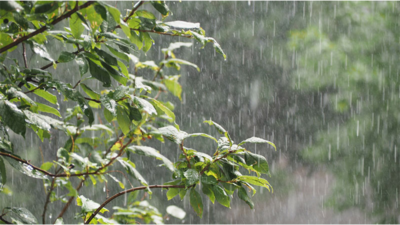Forest Environment
1. Summer
Weather and Climate: Generally speaking, summer in the forest means hotter temperatures and more humidity. Dappled light and shadow are produced as a result of sunlight passing through the dense vegetation. It frequently rains, which feeds the vegetation and adds to the ecosystem's general lushness.
Wildlife Activity: Wildlife in the woodland is very active throughout the summer. This time of year is crucial for breeding and raising young in many species. While mammals like deer, squirrels, and rabbits seek for food and tend to their young, birds build nests and care for their chicks. Invertebrates, such as insects, are abundant.
Flora and Fauna: The woodland is alive and thriving in the summer. Full-bloom trees and plants are presenting a vibrant array of green leaves and vibrant flowers. Undergrowth frequently forms a thick carpet on the forest floor. Numerous species, including birds, insects, mammals, and reptiles, are active and out in the open, taking advantage of the plentiful food supply and the favourable weather.
2.Winter
Snowy Landscapes: As snow covers the ground, trees, and plants, the forest undergoes a magnificent transition in the winter. With sparkling white snow transforming the forest into a picture-perfect backdrop, there is a calm feeling. A lovely winter wonderland is created by the branches and trees coated in snow.
Wildlife Behavior: Some animals become more active in their search for food and shelter throughout the winter. Deer, rabbits, and squirrels forage on bark, twigs, and food supplies that have been cached as an adaptation to the lack of food. As they move over the snow-covered terrain in search of prey, predatory animals like wolves and foxes may be simpler to notice.
Bird Migration: The forest's winter season frequently coincides with numerous bird species' migrations to warmer climates. Some birds, referred to as winter residents or resident species, stay in the forest year-round and eat berries, seeds, and insects that are available then.
3.Monsoon
Rainfall and Climate: The forest experiences prolonged, heavy rains during the monsoon season. This rainfall is essential to the forest environment because it replenishes water supplies, feeds the soil, and promotes plant and tree growth. The monsoon season's elevated humidity fosters a favourable habitat for the forest's flora and animals.
Water Sources and Streams: Rivers, streams, and ponds in the forest are refilled during the monsoon season. Since there is more rain, there is more water, which makes for perfect habitats for aquatic plants and animals. A source of water for numerous organisms and a contributor to the ecosystem's overall biodiversity, forest streams are flowing with renewed vigour.



Comments
Post a Comment